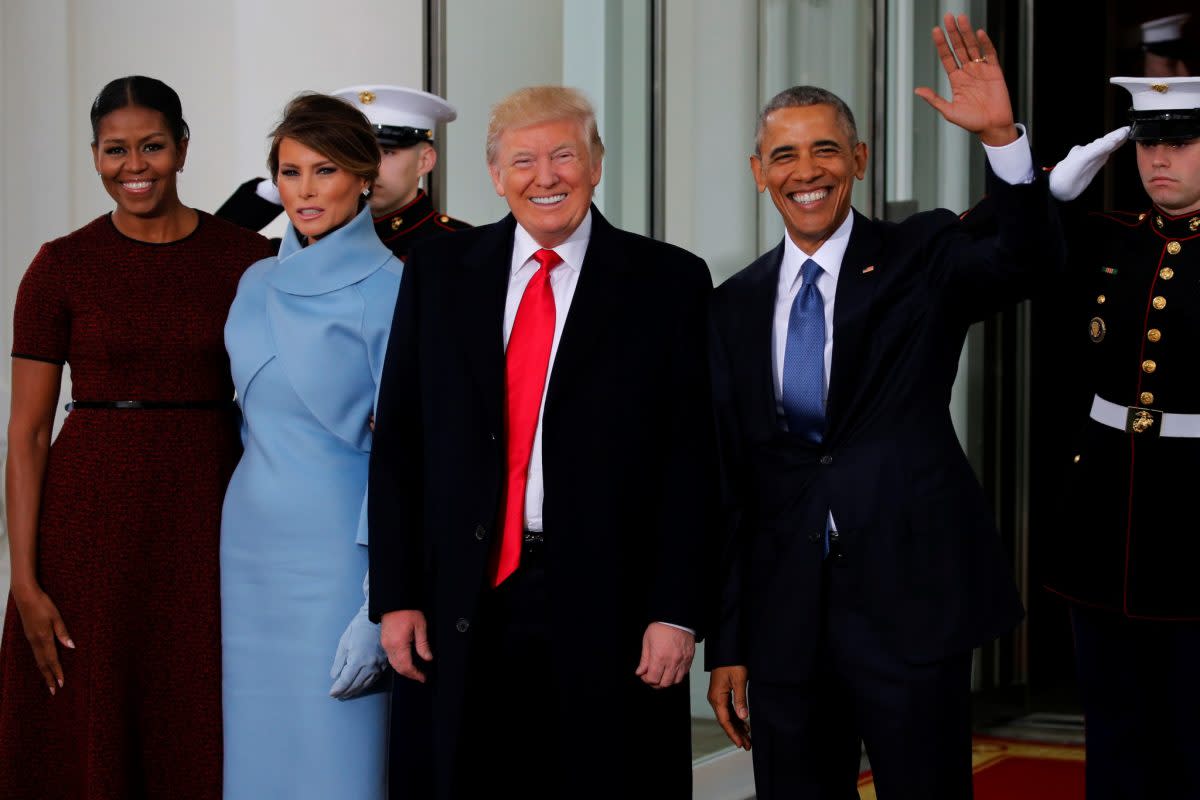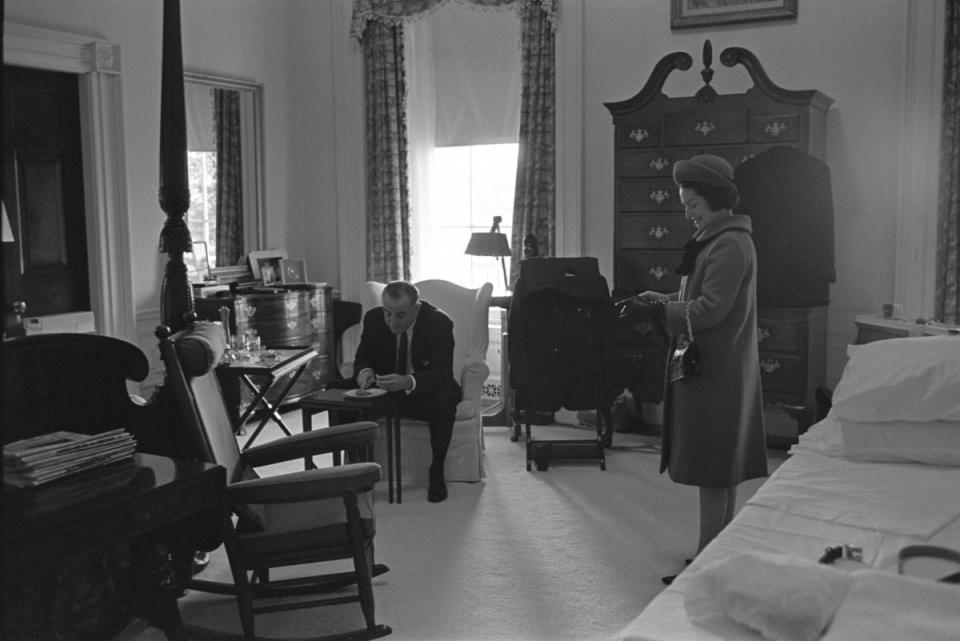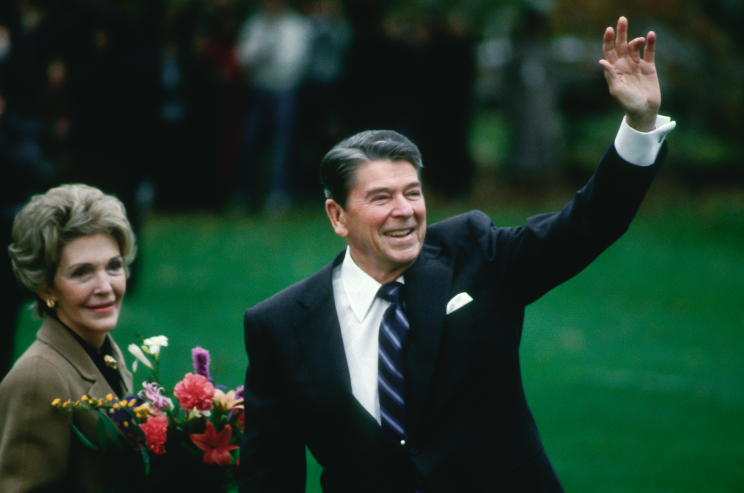7 fascinating facts about living in the White House

While the eyes of the world were trained on Donald Trump’s inauguration on Friday, a team of staffers was working behind the scenes to turn the White House into a home for the new first family.
That’s just one of the perks the Trump family will experience living in the White House for the next four (or eight) years.
1. Incoming presidents are responsible for getting their belongings to the White House
The first family will have a staff of 96 full-time and 250 part-time workers to make sure their time in the White House runs smoothly. However, until they’re actually in the White House, they’re on their own.
The new president is responsible for getting his belongings to the White House using private movers, which he pays for using either personal or leftover campaign funds. Likewise, the outgoing president is responsible for moving to his new residence.
For security reasons, only the residence staff is allowed inside. So, the private movers give way, leaving the staff to move one family in and the other family out.

2. The residence staff has approximately five hours to make the move
Once the president leaves for his inauguration, the staff jumps into motion so that when the new president arrives the White House feels like home. They place their clothes in closets, stock their favorite food in the pantry and even put their preferred toiletries in the bathroom.
The entire building gets a deep clean, drapes are replaced, carpenters make small repairs and paint touch-ups, but there isn’t time for much else.

3. The new president can make major changes to the residence
The president can make expansive changes to the White House, including changing the number of rooms. The staff can move around wall panels and open or close doors to split suites into separate bedrooms, creating up to 16 bedrooms.
The staff will rotate most of the furniture, artwork and photographs, which the president will pick out ahead of time. Some of the most important selections he makes will be in the Oval Office, where each decision is heavily scrutinized. Barack Obama caused a stir in 2009 when he replaced a bust of Winston Churchill with a bust of Martin Luther King Jr. — a move President Trump has promised to reverse.
Sometimes the changes can be a little too sweeping. Lyndon B. Johnson reportedly requested a shower which required “water charging out of multiple nozzles in every direction with needlelike intensity and a hugely powerful force.”
The shower was eventually built, but only after the plumbing foreman suffered a nervous breakdown and spent several days in the hospital.

4. The first family pays for its own groceries
While the president and his family live rent-free, they do have to pay for expenses such as food, toiletries, and services like dry cleaning.
That reportedly came as a surprise to some families. Jackie Kennedy instructed her staff to run the White House as cheaply as possible, telling them, “We don’t have nearly as much money as you read in the papers!”

5. There’s plenty to keep the first family occupied
While the president doesn’t have much free time, there are plenty of options to help fill the void when he does. The White House has a basketball court, a jogging track, a swimming pool, a movie theater, and a billiard room.
Richard Nixon even installed a bowling alley in the basement. According to Reader’s Digest, he would occasionally bowl with members of staff, including one memorable moment with pot washer Frankie Blair.
“Nixon asked Blair if he would play with him, and the two of them bowled until two in the morning. … After they wrapped up, Blair turned to the president and said, ‘There is no way my wife is going to believe I was out this late bowling with you.'”
So the pair walked into the Oval Office, where the Commander in Chief wrote a note to Blair’s wife explaining why her husband was out so late.
Family bowling session at The White House. @MrsVanessaTrump doing pretty well considering she’s in heels???? #bowling pic.twitter.com/tfPCmpDliG
— Donald Trump Jr. (@DonaldJTrumpJr) January 21, 2017
6. Privacy is at a premium
With so many people in one building and the need for the president to be available at all times, the first family and the staff have to be prepared for some awkward moments.
In 1981, a staffer delivered a vital document to President Ronald Reagan as he was stepping out of the shower wearing nothing but “a sheet of water.”
Later that night, he delivered another document to Reagan’s bedroom, where the president was in his underwear.
“Mrs. Reagan said, ‘Oh, Ronnie, you could put on a robe anyway.’ And he looked at her and said, ‘Oh, it’s alright. He’s already seen me naked once today. We’re old friends.'”

The first family has very few moments when they are truly by themselves. One of the few exceptions is when the president and first lady want some “alone time” together. The Secret Service refers to this private time as the couple “discussing the Bosnian problem.”
7. The perks don’t stop when the president leaves
While the outgoing president has to leave the White House, he never leaves the government payroll.
All former presidents receive an annual pension of almost $200,000 for life, Secret Service protection, paid official travel, health care and an official office. According to CNN, George H. W. Bush’s office in Houston costs $175,000 per year, while Bill Clinton’s space in New York City costs $516,000.
MORE: 11 strange moments from past US presidential inaugurations


